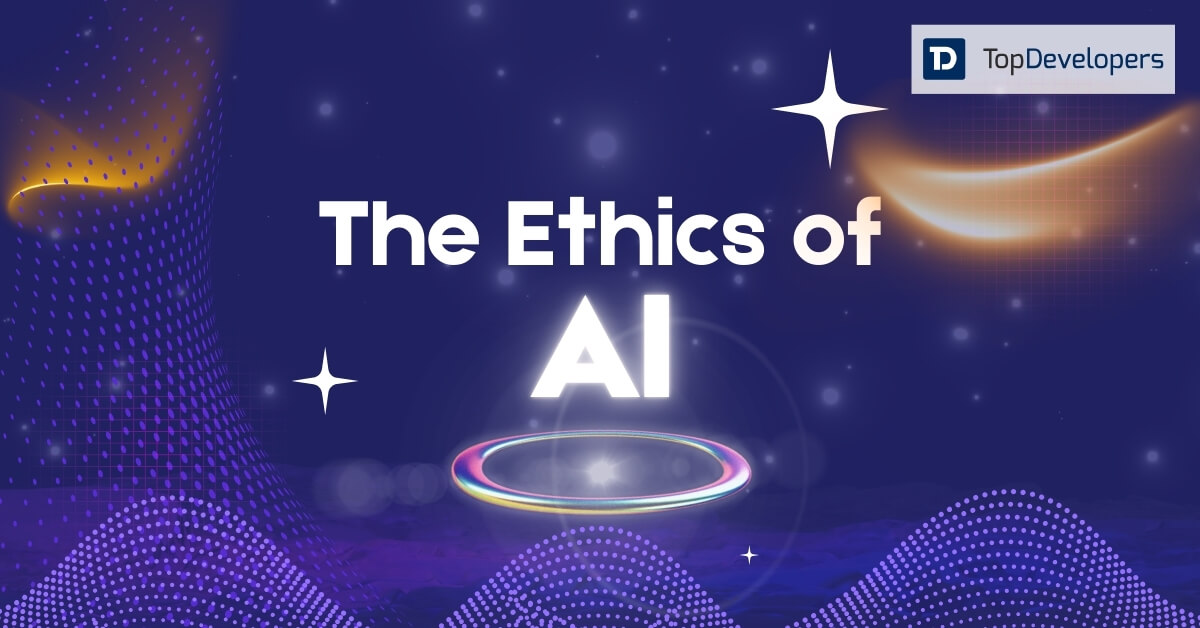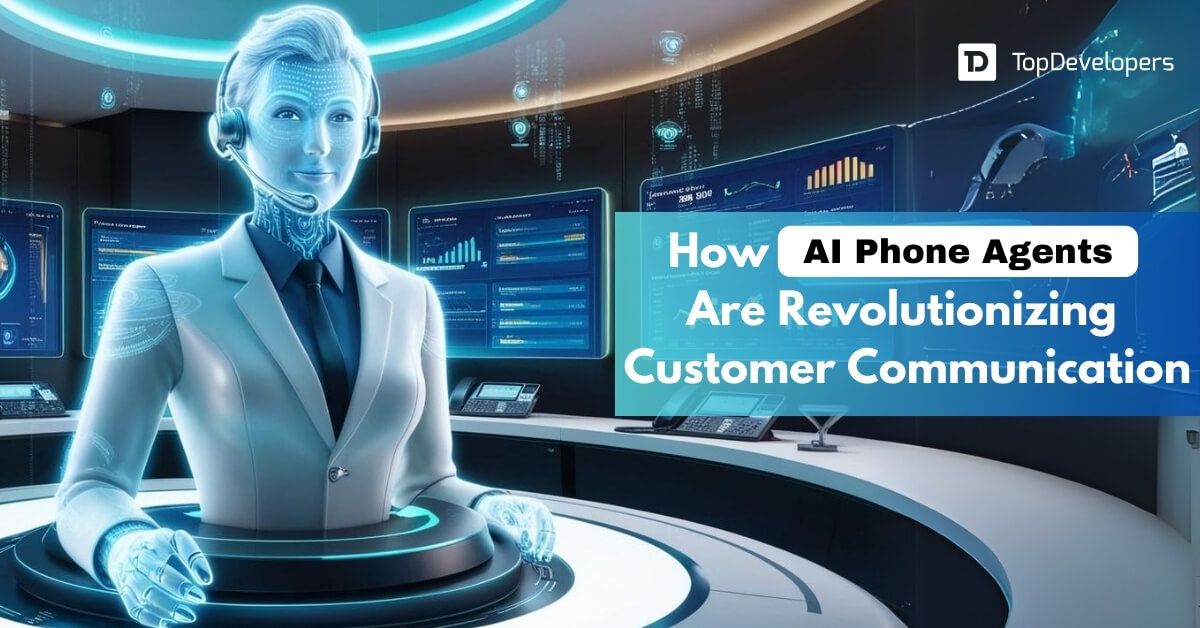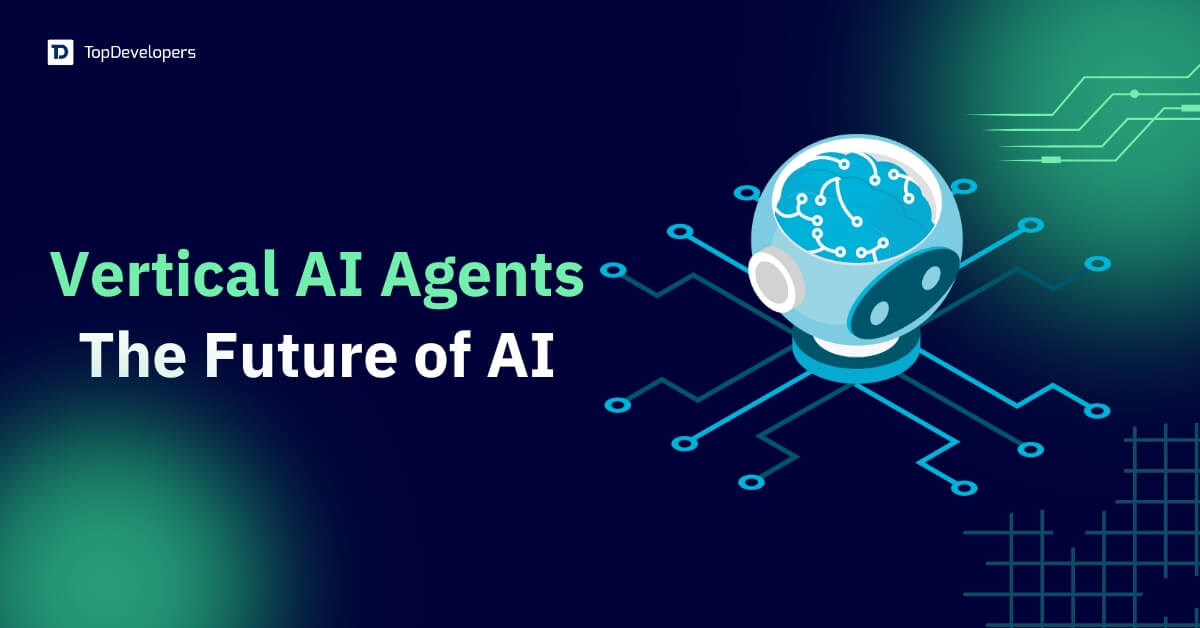
AI is making a significant impact is web development, where it is changing the traditional approaches to building and managing websites.
AI-first web development refers to the practice of designing and developing websites primarily using AI-powered tools, rather than relying mainly on human developers. This approach leverages artificial intelligence for key tasks such as layout generation, code creation, content optimization, and user experience personalization. Unlike AI-assisted development, where AI acts as a helper for specific tasks while humans remain in control, AI-first web development places AI at the center of the development process, allowing it to drive major decisions and outputs.
Businesses today face a critical question: should they trust AI to build their websites? On one hand, AI offers faster development times, cost efficiency, and the ability to automate repetitive tasks, which can be especially beneficial for startups and small businesses. On the other hand, concerns about creativity, brand uniqueness, security, and the AI’s ability to handle complex business requirements persist. Companies need to carefully evaluate whether AI-first web development aligns with their goals, target audience, and long-term growth strategy.
This article provides a comprehensive examination of AI-first web development, including its definition, technologies involved, benefits, challenges, comparisons with traditional development methods, and future prospects. It also outlines practical scenarios where AI-first web development can be most effective and emphasizes the importance of combining AI efficiency with human expertise for optimal results.
For businesses interested in exploring AI-driven solutions, a starting point can be reviewing AI agent developers who specialize in AI-based web platforms.
Table of Contents
What Is AI-First Web Development?
AI-first web development refers to the methodology where artificial intelligence is the central element in the creation of a website, guiding most of the design, coding, and content decisions. Unlike AI-assisted development, which uses AI tools only to support human developers in tasks like automated testing, layout suggestions, or minor coding, AI-first web development relies on AI to take the lead in building functional and visually appealing websites.
In an AI-first approach, businesses input basic requirements such as industry type, website purpose, preferred color schemes, branding elements, and desired functionalities, and the AI generates the initial website structure. The AI can also produce responsive layouts, create content drafts, and implement SEO-friendly elements automatically. This reduces the need for human intervention in repetitive or standardized tasks, allowing businesses to launch websites much faster than conventional methods.
The main distinction between AI-first and AI-assisted approaches is control and reliance. In AI-assisted development, humans make most strategic and creative decisions, using AI as a productivity tool. In AI-first web development, AI drives the majority of the process, making it suitable for businesses that prioritize speed, efficiency, and cost-effectiveness over full customization or highly unique design aesthetics.
Key AI Technologies in Web Development
Several AI technologies are central to the AI-first approach, enabling automation, personalization, and rapid website creation. These include:
- AI-powered website builders: Platforms such as Wix ADI, Bookmark, and Zyro use machine learning algorithms to generate complete websites based on minimal input from the user. These platforms can automatically design layouts, select color palettes, choose fonts, and suggest content structure that aligns with the industry or business goal.
- AI design generators and code automation: Tools like GitHub Copilot, TeleportHQ, and Durable AI can generate front-end and back-end code automatically, reducing human coding effort. They can create templates, style sheets, and interactive elements without manual programming, allowing rapid prototyping and even full deployment.
- AI for UX personalization and content optimization: AI can analyze user behavior in real time and adapt websites to increase engagement and conversions. Features include personalized content recommendations, dynamic product displays, intelligent chatbots for customer support, and adaptive layouts that respond to user interactions.
- AI-driven SEO and performance analytics: Modern AI platforms evaluate site performance, suggest keyword optimization, improve accessibility, and automatically adjust content for better search engine visibility, helping businesses attract more organic traffic without continuous human intervention.
Collectively, these technologies allow businesses to create websites that are visually appealing, functional, and optimized for performance with minimal time and cost investment. By placing AI at the center of the process, AI-first website development empowers companies to focus on strategy and business growth rather than spending months on design and coding.
Benefits of AI-First Web Development for Businesses
AI-first web development offers a variety of benefits that can significantly impact a business’s online presence, efficiency, and bottom line. By leveraging AI to automate and optimize the web development process, businesses can achieve faster results, reduce costs, and create more personalized user experiences. The main benefits include:
- Faster Development and Reduced Costs: AI-first web development dramatically shortens the time needed to build a website. Tasks that traditionally required weeks or even months, such as coding, layout design, and content integration, can now be accomplished in hours or days using AI tools. This speed not only allows businesses to launch quickly but also significantly reduces development costs by minimizing the need for large teams of designers, developers, and testers.
- Personalized User Experiences: AI-driven platforms can analyze visitor behavior, preferences, and engagement patterns to create personalized experiences in real time. This includes dynamic content adjustments, personalized product recommendations, customized layouts, and even targeted promotional offers. Personalization enhances user engagement, improves conversion rates, and strengthens customer loyalty by ensuring each visitor has a relevant and unique experience on the website.
- Automation Across Design, Coding, and Testing: AI automates repetitive and time-consuming tasks such as creating responsive layouts, writing code snippets, testing functionality across devices and browsers, and ensuring accessibility standards. Automation not only speeds up the development process but also reduces human errors, resulting in more reliable and consistent website performance.
- Scalability With Minimal Human Intervention: As businesses grow and their website requirements evolve, AI can handle increased complexity without requiring significant manual intervention. AI platforms can automatically manage additional content, increase site performance for higher traffic, and optimize user experiences for larger audiences, making scalability seamless and cost-effective.
- Data-Driven Decision Making: AI continuously collects and analyzes website data, providing actionable insights into user behavior, conversion patterns, and content performance. Businesses can use this information to make informed decisions about design changes, content strategy, and marketing campaigns. AI allows businesses to experiment with different approaches quickly, measure results in real time, and optimize the website for better engagement and return on investment.
- Rapid Prototyping and Iteration: For startups and small businesses, AI-first web development enables rapid prototyping of websites and minimum viable products (MVPs). Businesses can test ideas, gather feedback, and iterate quickly without significant investment. This allows for experimentation and innovation without the delays and costs of traditional web development.
- Improved SEO and Accessibility: AI tools often include features that automatically optimize websites for search engines, suggest keywords, and structure content for maximum visibility. They can also ensure websites comply with accessibility standards, improving usability for all visitors and enhancing the overall reach and effectiveness of the site.
By integrating AI-first development into their strategy, businesses can achieve a balance between efficiency, cost-effectiveness, and enhanced user experience. AI enables companies to focus on growth, strategy, and customer engagement while handling the technical and operational complexities of web development. For additional insights on leveraging AI for website management, businesses can explore resources such as AI agents and how they can enhance website performance.
Challenges and Limitations of AI-First Web Development
While AI-first web development offers significant benefits, it is not without challenges and limitations. Businesses must carefully evaluate potential risks before fully relying on AI to build their websites. Some of the key challenges include:
Lack of Human Creativity and Customization
One of the primary limitations of AI-first web development is its reduced ability to deliver unique and highly creative designs. AI tools rely on patterns and pre-existing templates to generate layouts, content, and visual elements. While this ensures efficiency and consistency, it can make websites feel generic and less aligned with a brand’s personality. For businesses seeking highly customized designs, unique branding, or creative storytelling, human designers remain essential. AI can provide a foundation, but human creativity is still necessary to make a website truly distinctive.
Security Concerns and Data Privacy Risks
AI platforms rely heavily on data, including user behavior, personal information, and business analytics, to optimize websites. This creates potential security risks, such as data breaches or unauthorized access. Additionally, companies must ensure compliance with data privacy regulations, including GDPR, CCPA, or other local standards. Choosing an AI platform that prioritizes security and provides clear data governance policies is critical for protecting both the business and its users.
Limitations in Handling Complex Business Requirements
AI-first development works best for template-based or content-driven websites, such as blogs, portfolios, or small e-commerce stores. However, complex requirements like custom workflows, enterprise integrations, multi-layered databases, or specialized user interactions may exceed the capabilities of AI tools. Businesses with advanced technical needs may find that AI cannot fully replace traditional development for these scenarios.
Dependence on AI Tools and Vendor Lock-In
Relying entirely on one AI platform can create dependency on a specific vendor, making it difficult to migrate the website, switch tools, or adopt new technologies in the future. Vendor lock-in can limit flexibility and increase long-term costs. Businesses should consider the portability of their website, the ability to export code or content, and the support options provided by AI platforms to mitigate these risks.
Trust and Reliability Issues
AI systems are not perfect and may make errors in design, code generation, or content optimization. Blindly trusting AI without human oversight can lead to functional issues, poor user experience, or misaligned business objectives. It is important for businesses to regularly review AI outputs, perform quality assurance checks, and maintain human involvement for critical decisions. Additionally, creating an AI-agent ready website can help ensure reliability and alignment with business goals.
Understanding these challenges helps businesses make informed decisions about when and how to use AI-first web development. While AI can greatly accelerate website creation and optimization, human oversight remains essential for creativity, security, and handling complex requirements.
AI-First vs Traditional Web Development
Choosing between AI-first and traditional web development requires understanding the trade-offs in speed, customization, cost, and overall flexibility. Both approaches have unique advantages and limitations, and the right choice depends on the business’s goals, budget, and technical requirements.
Speed vs Customization
AI-first web development excels in speed. AI platforms can generate a fully functional website in hours or days, automating tasks like layout design, code creation, and content optimization. Traditional development, in contrast, typically takes weeks or months because it involves a team of designers, developers, and testers manually building each component. However, traditional development offers a higher degree of customization. Developers can create unique designs, implement advanced features, and tailor the website precisely to the business’s brand identity and functional needs. For businesses that prioritize rapid deployment, AI-first is advantageous, while those needing unique or complex features may prefer traditional development.
Cost Efficiency vs Long-Term Flexibility
AI-first development is generally more cost-effective upfront. Businesses can save on hiring large development teams, paying designer fees, or conducting extended QA processes. It is ideal for startups, small businesses, or projects with limited budgets. Traditional web development may involve higher initial costs, but it often provides greater long-term flexibility. Websites built by humans are easier to modify, integrate with other systems, and scale as the business grows. AI-first solutions may limit flexibility if the platform does not allow easy code export or customization, potentially resulting in higher costs in the long term if changes are required.
Automation vs Human Expertise
AI-first platforms automate repetitive and technical tasks, including coding, testing, and content optimization. This reduces human effort and accelerates deployment. However, AI lacks the intuition, creativity, and problem-solving abilities that human developers bring to the table. Human expertise is essential for strategic decision-making, designing complex features, and ensuring the website aligns with brand identity and business goals. Businesses that rely solely on AI risk creating functional websites that may not fully engage users or reflect their brand accurately.
When AI-First Wins, When Humans Still Matter
AI-first web development is ideal in scenarios where speed, efficiency, and cost savings are the primary priorities. Examples include small business websites, landing pages, blogs, content-heavy platforms, and prototypes or minimum viable products. AI can generate a polished, functional website quickly, allowing businesses to launch and iterate without heavy investment.
Human-led traditional development is still critical when businesses require advanced functionality, complex integrations, highly customized designs, or unique brand experiences. For enterprise-level projects or websites with specialized workflows, human expertise ensures quality, flexibility, and long-term sustainability. In many cases, the best approach combines both methods, allowing AI to handle repetitive tasks while humans focus on creativity, strategy, and quality assurance.
When Should Businesses Choose AI-First Web Development?
AI-first web development is not a one-size-fits-all solution. Its effectiveness depends on the business’s size, budget, technical requirements, and speed of deployment. Understanding the scenarios where AI-first web development excels can help businesses make informed decisions and maximize the benefits of AI-driven websites.
- Startups and Small Businesses with Limited Budgets: AI-first platforms allow smaller businesses to build professional, functional websites without the high costs associated with hiring large development teams. By automating tasks such as layout design, coding, and content generation, AI reduces expenses while still delivering visually appealing and user-friendly websites.
- Rapid Prototyping and Minimum Viable Products (MVPs): Businesses testing new ideas or launching products quickly can benefit from AI-first web development. AI can create prototypes and MVPs rapidly, enabling real-time testing, gathering of user feedback, and iterative improvements. This approach saves time and reduces the financial risks associated with traditional development cycles.
- Content-Heavy or Template-Based Websites: Blogs, portfolios, informational websites, and small e-commerce platforms are particularly well-suited for AI-first web development. AI platforms can efficiently generate consistent layouts, optimize content presentation, and ensure a professional look across multiple pages, making them ideal for projects with standardized structures.
- Frequent Updates and Dynamic Content: Websites that require regular content changes, seasonal campaigns, or promotional updates can leverage AI to automate repetitive updates. This reduces human effort while ensuring timely, error-free modifications and maintaining a fresh online presence.
- Simple Functional Requirements: AI-first development works best when the website functions are straightforward, such as contact forms, subscription pages, galleries, or basic product catalogs. Complex functionalities like enterprise-level integrations, advanced workflows, or custom applications may still require traditional human-led development.
- Businesses Exploring AI Integration: Companies aiming to integrate AI into their digital strategy can start with AI-first web development. AI platforms allow experimentation with features such as personalization, content optimization, automated SEO, and user analytics. Combining these capabilities with a broader AI strategy ensures businesses leverage AI efficiently while maintaining human oversight and strategic control.
In summary, businesses should choose AI-first web development when the goals involve speed, cost efficiency, and content-driven or template-based projects. While AI handles automation and optimization, human oversight remains essential for strategic decisions, branding, and complex functionality. By selecting projects aligned with AI-first strengths and integrating it into a broader AI strategy, companies can achieve fast deployment, improved user experience, and measurable business outcomes without compromising quality.
The Future of AI-First Web Development
The future of web development is increasingly intertwined with artificial intelligence. As AI technologies advance, more businesses are adopting AI-first approaches to design, code, and optimize websites. Several trends are shaping the next decade of AI-first web development, highlighting both opportunities and considerations for companies planning their digital strategies.
- Widespread Adoption of AI-Powered Platforms: AI-first web development platforms are becoming more sophisticated, accessible, and widely used across industries. Businesses of all sizes, from startups to enterprises, are beginning to rely on AI to create functional, visually appealing, and optimized websites. This trend is likely to accelerate as AI tools improve in accuracy, design capability, and automation.
- Growth of No-Code and Low-Code Solutions: No-code and low-code AI-first platforms are making website creation accessible to non-technical entrepreneurs. Users can input their requirements and allow AI to generate complex features without coding knowledge. This democratization of web development empowers businesses to launch websites quickly while focusing on strategy and growth.
- AI in SEO, Accessibility, and Performance Optimization: Future AI platforms will increasingly handle search engine optimization automatically, suggesting keywords, structuring content for higher visibility, and optimizing site speed. AI will also ensure accessibility compliance, helping websites meet standards for users with disabilities. Performance optimization, including adaptive layouts, automated testing, and error correction, will become largely automated, reducing the need for manual monitoring.
- Integration of AI-Human Collaboration: The future of web development will likely rely on a hybrid model where AI handles repetitive tasks, data analysis, and optimization, while humans focus on creativity, branding, and strategic decision-making. AI-human collaboration ensures websites are both efficient and engaging, combining speed and automation with unique design and quality control.
- Personalization and Predictive Experiences: AI will increasingly enable predictive personalization, tailoring website experiences based on user behavior, preferences, and previous interactions. Businesses can provide highly relevant content, product recommendations, and dynamic interfaces that adapt in real time, increasing engagement and conversions.
- Advanced Automation and Smart Analytics: AI tools will continue to evolve in their ability to collect, analyze, and interpret user data, providing actionable insights for content strategy, marketing, and business decisions. Smart automation will allow websites to self-optimize continuously, adapting to trends and user behavior without manual intervention.
Overall, the future of AI-first web development will not eliminate human involvement but will redefine it. Humans will focus on creativity, strategy, and decision-making, while AI handles automation, optimization, and analysis. Businesses that embrace AI-first approaches while maintaining human oversight are likely to gain competitive advantages, including faster time to market, cost efficiency, and enhanced user experiences. The balance between AI and human creativity will define the next decade of web development.
Conclusion
AI-first web development represents a significant shift in how websites are built, maintained, and optimized. By placing artificial intelligence at the center of the development process, businesses can leverage automation, rapid deployment, and data-driven optimization to achieve faster results and reduce costs. AI can handle repetitive tasks such as coding, layout generation, content optimization, and user personalization, allowing businesses to focus on growth, strategy, and customer engagement.
However, AI-first website development also comes with limitations. It may lack the creativity, unique design elements, and strategic insight that human developers provide. Security concerns, vendor dependency, and challenges in handling complex requirements are additional factors that businesses must consider. Blind reliance on AI can lead to generic designs, functionality gaps, and potential long-term costs if modifications or migrations become necessary.
The key takeaway is that the most effective approach combines the strengths of both AI and human expertise. AI can accelerate development, automate repetitive tasks, and provide data-driven insights, while humans ensure creativity, strategic alignment, and quality control. Businesses that integrate AI-first web development into their strategy without abandoning human oversight are likely to achieve the best results, including efficiency, cost savings, and engaging user experiences.
In conclusion, businesses should trust AI-first web development when it aligns with their goals, project complexity, and budget. For startups, small businesses, or content-heavy websites, AI-first platforms provide a fast, cost-effective solution. For complex or enterprise-level websites, combining AI capabilities with human developers ensures flexibility, customization, and quality. Exploring partnerships with web development companies that leverage AI can provide the best of both worlds, maximizing efficiency while maintaining creativity and strategic oversight.
FAQs regarding AI-first web development
Is AI-first web development reliable for businesses?
AI-first web development can be highly reliable for businesses with straightforward website requirements, such as small e-commerce stores, blogs, portfolios, or landing pages. AI platforms automate coding, layout creation, content optimization, and even SEO tasks, reducing human error and speeding up deployment. However, reliability depends on choosing a reputable AI platform, regularly monitoring outputs, and applying human oversight for quality control and complex decisions. For businesses with more advanced requirements, a hybrid approach combining AI and human expertise ensures maximum reliability.
Can AI completely replace web developers?
No, AI cannot fully replace web developers. While AI can automate repetitive tasks like layout generation, content suggestions, and basic coding, human developers provide creativity, strategic thinking, and problem-solving skills that AI cannot replicate. Complex customizations, advanced integrations, and brand-specific designs still require human expertise. The most effective approach is collaboration, where AI handles efficiency-driven tasks, and humans focus on innovation, strategy, and quality assurance.
What kind of websites are best suited for AI-first development?
AI-first development is ideal for websites with standardized or template-based structures, content-heavy platforms, and projects requiring rapid deployment. Examples include blogs, portfolios, landing pages, small e-commerce stores, and informational sites. Websites with simple workflows, repetitive design elements, and frequent content updates benefit most from AI-first development, as AI can efficiently automate layout, coding, and content optimization.
Is AI-first web development cost-effective?
Yes, AI-first web development is cost-effective, especially for startups and small businesses. By reducing the need for large development teams, minimizing manual coding, and automating repetitive tasks, businesses save time and money. The cost-effectiveness is highest for projects with simple functionality, frequent content updates, or rapid prototyping needs. However, for highly complex or enterprise-level websites, traditional development may offer better long-term flexibility and customization.
What’s the future of AI in web design and development?
The future of AI in web design and development will focus on collaboration between AI and humans. AI will handle automation, performance optimization, predictive personalization, SEO, accessibility, and data-driven insights. Humans will focus on creativity, branding, strategy, and complex decision-making. Emerging trends include no-code/low-code AI platforms, AI-driven analytics, and predictive personalization that adapts websites in real time. Businesses that integrate AI strategically will gain faster deployment, enhanced user experiences, and more efficient website management.
 Gillian Harper
| Oct 6, 2025
Gillian Harper
| Oct 6, 2025
A professionally engaged blogger, an entertainer, dancer, tech critic, movie buff and a quick learner with an impressive personality! I work as a Senior Process Specialist at Topdevelopers.co as I can readily solve business problems by analyzing the overall process. I’m also good at building a better rapport with people!


